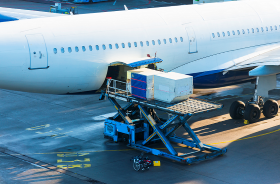The International Air Transport Association (IATA) released data for June 2025 global air cargo markets, showing a modest overall demand increase of 0.8% year-over-year.
While total demand, measured in cargo tonne-kilometers (CTKs), saw a slight rise, regional performance varied significantly due to ongoing trade tensions and geopolitical disruptions.
Total capacity, measured in available cargo tonne-kilometers (ACTKs), increased by 1.7% compared to June 2024. For international operations, demand grew by 1.6% and capacity by 2.8%.
“Overall, air cargo demand grew by a modest 0.8% year-on-year in June, but there are very different stories behind that number for the industry’s major players,” said Willie Walsh, IATA’s Director General. “Trade tensions led to an 8.3% decline in North American traffic and stagnated European growth at 0.8%. However, the Asia-Pacific region bucked the trend to report a 9.0% expansion. Meanwhile, disruptions from military conflict in the Middle East saw the region’s cargo traffic fall by 3.2%.”
Key Regional Performance Highlights:
- Asia-Pacific airlines led all regions with a strong 9.0% year-on-year demand growth. Capacity also saw a healthy increase of 7.8%.
- North American carriers experienced the steepest decline, with an 8.3% year-on-year decrease in demand. Capacity for the region also fell by 5.1%.
- European carriers saw a modest 0.8% year-on-year demand growth, while capacity increased by 2.6%.
- Middle Eastern carriers faced a 3.2% year-on-year decrease in demand, with a capacity increase of 1.5%.
- Latin American carriers reported a 3.5% year-on-year increase in demand, despite a slight capacity decrease of 0.4%.
- African airlines saw demand rise by 3.9% year-on-year, with a corresponding capacity increase of 6.2%.
Operating Environment Factors:
- World industrial production grew by 3.2% in May, and global goods trade expanded by 3.5% year-on-year.
- The jet fuel price was 12% lower year-on-year in June, marking the fourth consecutive monthly decline.
- The Global Manufacturing PMI rebounded to 51.2 in June, moving back above the 50-mark. The PMI for new export orders, however, remained in negative territory at 49.3, reflecting pressure from recent US trade policy shifts.
Walsh concluded, “The June air cargo data made it very clear that stability and predictability are essential supports for trade. Emerging clarity on US tariffs allows businesses greater confidence in planning. But we cannot overlook the fact that the ‘deals’ being struck are resulting in significantly higher tariffs on goods imported into the US than we had just a few months ago. The economic damage of these cost barriers to trade remains to be seen. In the meantime, governments should redouble efforts to make trade facilitation simpler, faster, cheaper, and more secure with digitalization.”




